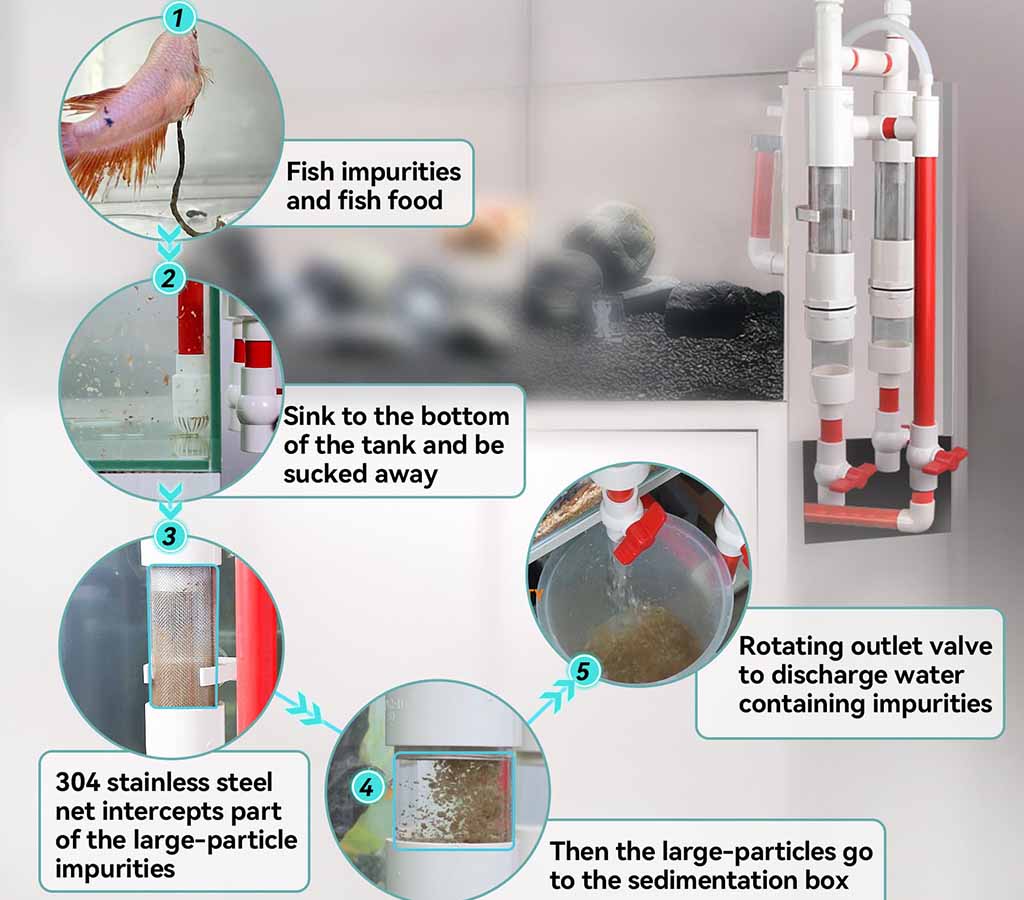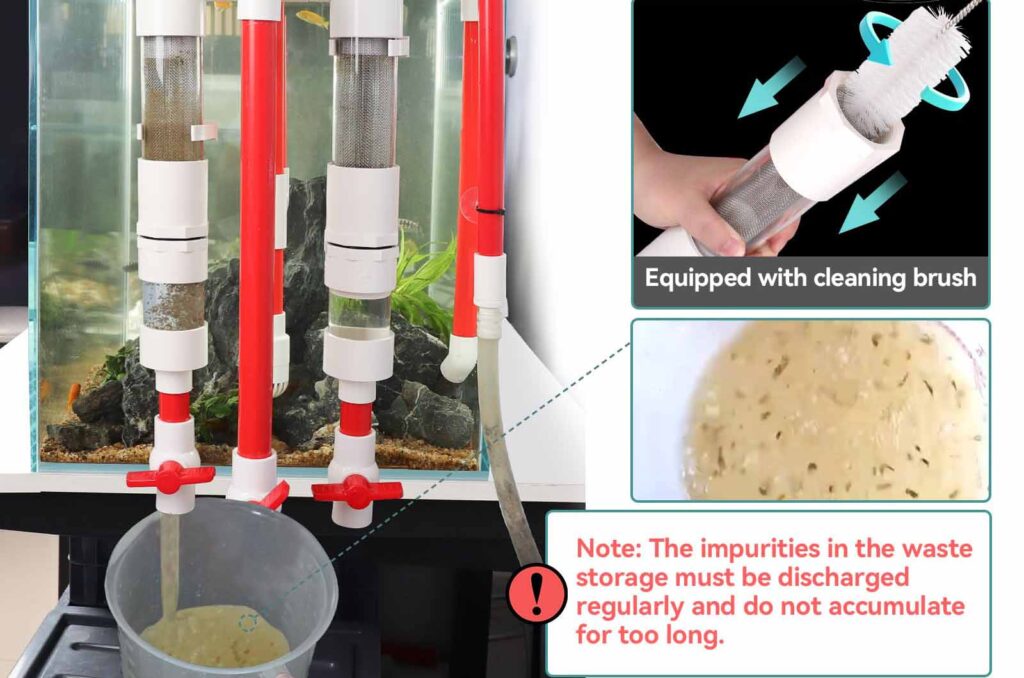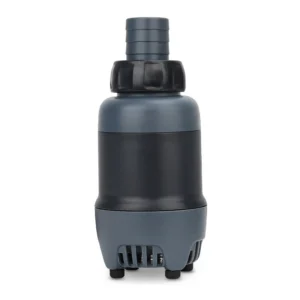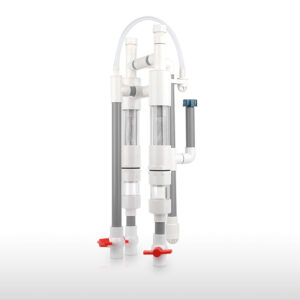Do you want to avoid the stress of dealing with the bad smell and odor that accompany the fish waste? Most aquarists find it difficult to collect fish waste correctly and dispose of it without polluting the environment. Not only does it look unpleasant, but it is also detrimental to water quality and often becomes a breeding ground for midges. This article is focused on possible solutions on how to deal with fish waste in one’s home. We will discuss its use as fertilizer and a waste collector for fish, and the proper ways to dispose of fish waste.
Content Table

Disposal of fish waste
Can Fish Waste Be Used as Fertilizer
Fish waste or fish hydrolysate, popularly known as fish meal, works well as a plant fertilizer. As was observed, it is a good source of plant nutrients such as nitrogen, phosphor, and potassium, which are crucial in the growth and development of plants. Further, fish waste comprises organic substances, amino acids, and other micro-nutrients that revolutionize the soil status and bud dynamism in plants.
Here are a few ways fish waste can be used
- Composting: Fish waste can be thrown as a top dressing or buried in composting heaps, where the green mass decomposes and drops nutrients into the ground.
- Fertilizer: These wastes can be stabilized and used as liquid or solid fish meal fertilizers. These can be used as a spray solution to the plants and also be incorporated into the soil.
- Hydroponics: Fish waste can be used for hydroponics, as the fish wastes become nutrient solutions used in growing plants underwater.
What Is Fish Waste Collector
A fish waste collector is an implement designed to gather and eliminate fish waste from fish tanks. It’s a necessity for the health of the water body since wastes can pollute the water and thus cause poor water qualities such as ammonia and algae, and harm fish.
Here are the primary roles of a fish waste collector
- Waste Removal: The collector traps fish waste so that it doesn’t fall on the bottom of the aquarium and decompose, which will cause water quality problems.
- Water Filtration: It removes waste and helps to lighten your main aquarium filter’s workload for cleaner water.
- Ammonia Reduction: Fish waste is a toxic byproduct of ammonia. Minimizing ammonia levels helps protect the fish, a fish waste collector can help.
- Algae Control: Fish waste can add excess nutrients to the water needed for algae to grow. The collector removes waste to help control algae blooms.

Install fish waste collector
How to Use the Fish Waste Collector
Fish waste collectors can be used in a variety of aquarium setups, including:
- Freshwater Aquariums: These are by far the most common type of aquarium and usually benefit from fish waste collectors so that water quality can be maintained.
- Saltwater Aquariums: Some waste build-up can be particularly sensitive in saltwater environments. Prevents problems caused by ammonia spikes, algae blooms, and more with a fish waste collector.
- Planted Aquariums: A fish waste collector can help clean up excess waste and prevent full-on nutrient buildup, but there are many ways for plants to absorb nutrients.
- Breeding Tanks: A high fish-to-water ratio is common in breeding tanks, and waste management is, therefore, important. Having a fish waste collector can help your water stay clean and healthy for breeding fish.
Using the hygger 141 Fish Waste Collector in Various Tanks
The hygger 141 fish waste collector is designed for more advanced aquarium setups and can be used in several ways:
- DIY Filtration System: Combine the collector with a bottom container, filter media, and a water pump to create a custom filtration system tailored to your specific tank needs.
- Large or Long Aquariums: The collector’s modular design makes it suitable for larger tanks where traditional filtration methods might struggle.
- Sump Tanks: Integrate the collector into a sump tank to provide additional filtration and waste removal.
Here’s a general guide on how to use the hygger fish waste collector
- Set Up the Collector: Connect the water inlet and outlet pipes to your aquarium and sump tank. Ensure the collector is positioned to effectively capture waste.
- Add Filter Media: Fill the bottom container with appropriate filter media, such as biomedical or mechanical filtration materials.
- Connect the Water Pump: Attach the water pump to the bottom container to circulate water through the filter.
- Monitor and Maintain: Regularly check the filter media and clean it as needed. Adjust the water flow rate as necessary to optimize performance.

Collect fish waste
Additional Tips
- Adjust Water Flow: Use the outlet valve to control the water flow rate and prevent overflow.
- Clean Regularly: Clean the collector and filter media to maintain optimal performance.
- Use the Pipe Brush: The included pipe brush can help remove debris from the pipes.
- Prevent Leaks: Use the white tape to wrap around any leaking connections.
How to Dispose of Fish Waste at Home
The proper disposal of fish waste is essential to prevent odors, attract pests, and maintain a healthy environment. Here are a few methods you can use:
Composting
- Combine with other organic waste: Compost fish waste with other things that are compostable, such as food scraps, leaves, and grass clippings.
- Balance the carbon-to-nitrogen ratio: Keeping a nice balance of carbon-rich materials (i.e., dry leaves) and nitrogen-rich materials (i.e., fish waste) will help inhibit odors and help decomposition.
- Turn the pile regularly: This aerates the compost and promotes decomposition.
- Let it mature: Let the compost age for several months before using it as a soil improvement.
Burial
- Dig a hole: In a particular yard area, dig a shallow hole.
- Place the waste: Place the fish waste into the hole and do it carefully.
- Cover with soil: Put a cover of soil over the waste to hide it from odors and to deter pests.
Sealed Container
- Use a plastic container: Put the fish waste in a sealed container.
- Add absorbent materials: To control odors, add absorbent materials such as newspaper or cat litter.
- Store in a cool, dry place: The container should be stored in a cool, dry location out of sunlight.
- Dispose of regularly: Toss the contents of the container into your regular trash.

Dispose of fish waste for fish tank
Closing Remarks
Proper fish waste disposal prevents odors and pests and ensures a healthy aquarium environment. Once you know the different methods of using fish waste as fertilizer or fish waste collectors, you can take responsibility for this waste and keep an environment free of nasty waste and a clean, enjoyable aquatic experience. Make sure that you always choose the right disposal method suitable for you and your fish, and always make sure you take care of your fish and clean your home.


Leave a comment